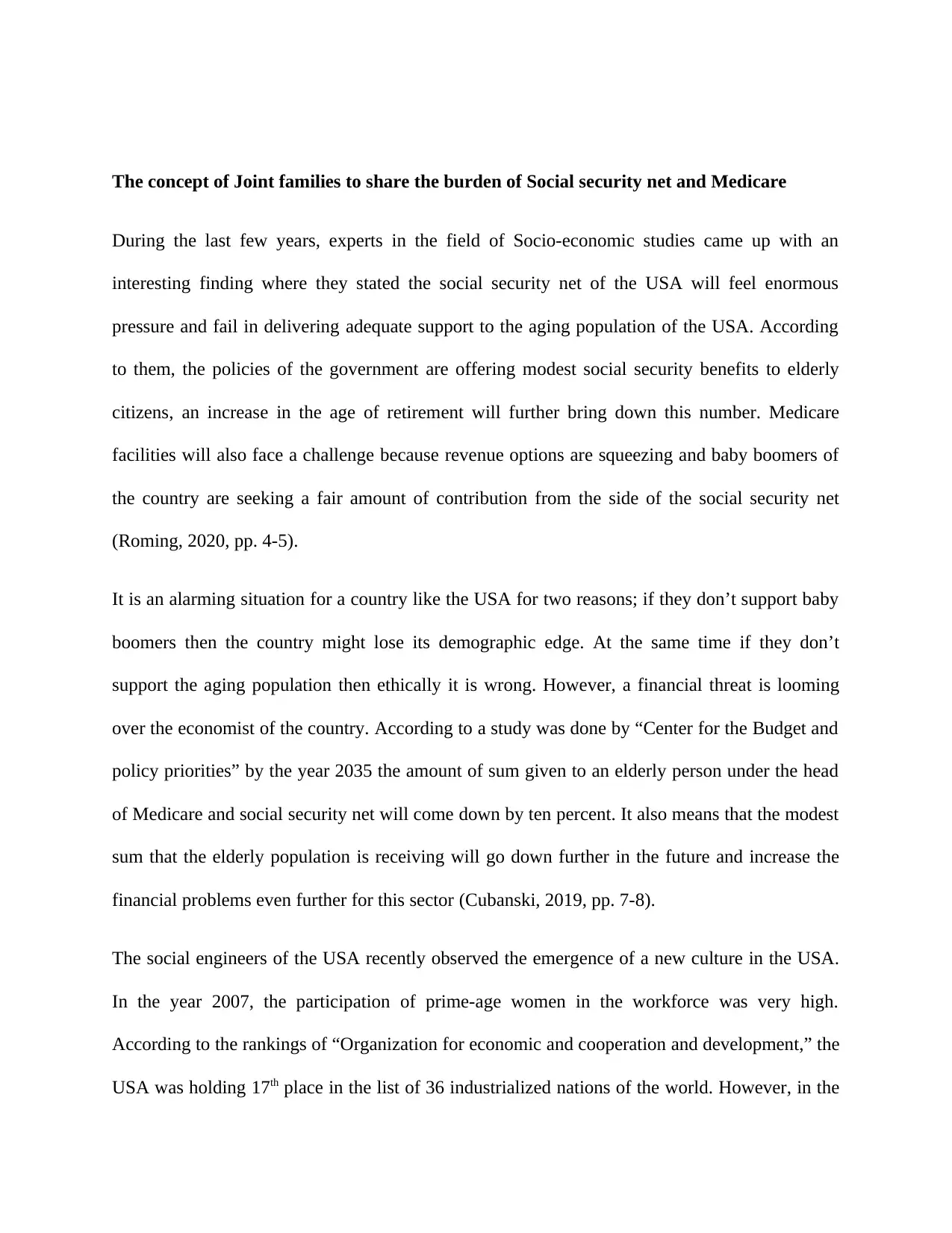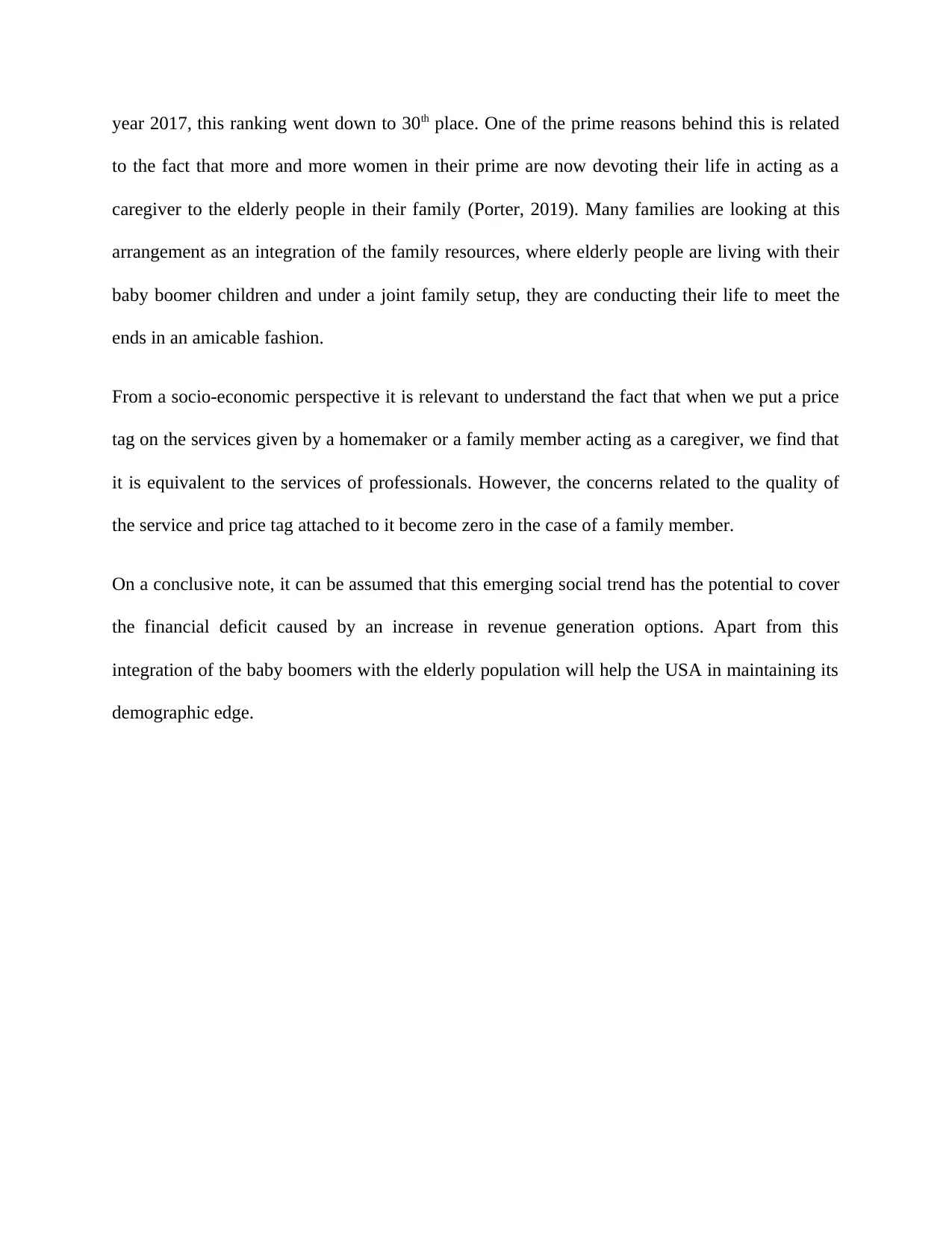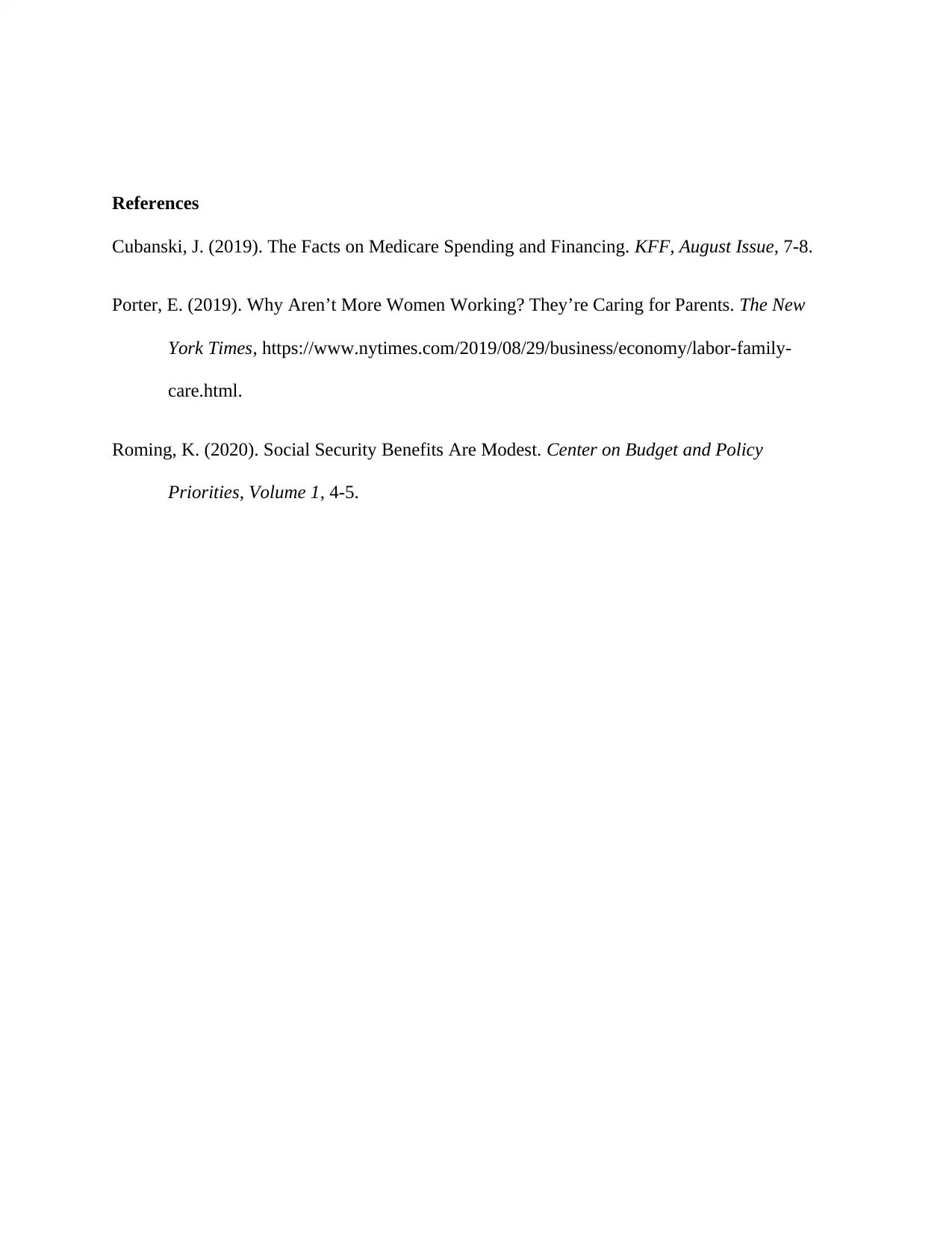Future of Medicare and Social Security: A Socio-Economic Analysis
VerifiedAdded on 2022/08/13
|4
|662
|42
Discussion Board Post
AI Summary
This assignment explores the future of Medicare and Social Security in the USA, addressing the challenges posed by an aging population and financial pressures. The analysis highlights the potential strain on social security benefits and Medicare facilities due to factors like increased retirement age and squeezing revenue options. The assignment also discusses the emergence of family caregiving as a response, where families integrate resources to support elderly members, potentially offsetting some financial deficits. The socio-economic perspective emphasizes the value of family care and its potential to maintain the country's demographic edge. The assignment references studies and articles to support the arguments, providing a comprehensive overview of the topic and its implications.
1 out of 4




![[object Object]](/_next/static/media/star-bottom.7253800d.svg)